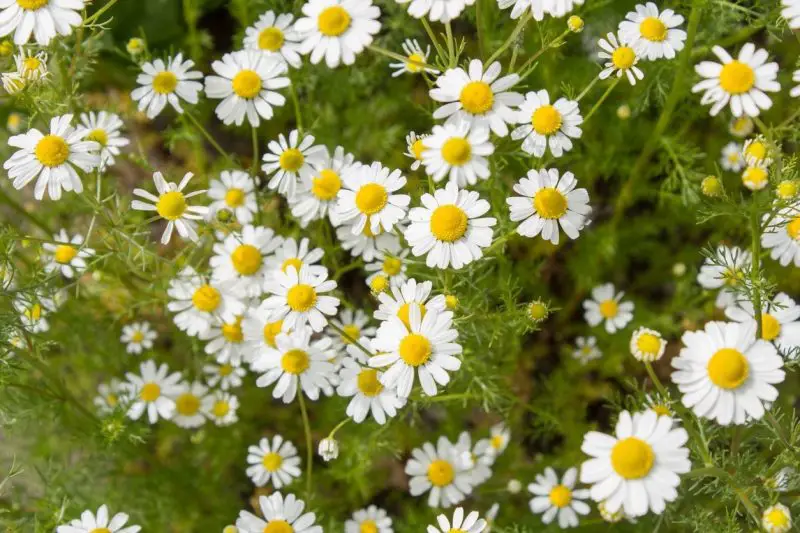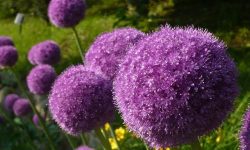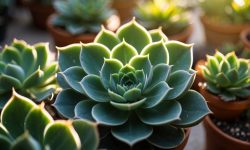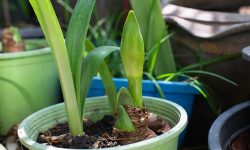Chamomile has been treasured for centuries, not only for its delicate beauty but also for its calming aroma and soothing properties. The gentle, daisy-like flowers bring charm to any garden, while their aromatic blossoms can be transformed into flavorful, health-promoting tea. Known for its relaxing effects, chamomile tea remains one of the most popular herbal infusions worldwide, appreciated for its mild sweetness and floral fragrance.
Growing chamomile at home offers a double reward. You enjoy a continuous display of cheerful blooms through the warm seasons and the satisfaction of harvesting your own tea ingredients. The plant also supports pollinators, making it a valuable addition to an eco-friendly garden. In this guide, you will learn how to grow both Roman chamomile (Chamaemelum nobile) and German chamomile (Matricaria chamomilla), ensuring your garden remains filled with flowers and your teacup never runs empty.
Understanding the Differences Between Roman and German Chamomile

Roman Chamomile: A Perennial Groundcover and Tea Plant
Roman chamomile is a low-growing perennial that forms a fragrant, feathery carpet of greenery. Its slender stems are adorned with small white flowers resembling daisies, each with a bright yellow center. Thriving in zones 4 to 9, this variety returns year after year in suitable climates, making it a dependable choice for gardeners who prefer plants that require minimal replanting. Roman chamomile favors cooler summers and is often used as a living mulch or a soft lawn alternative, adding beauty and scent to garden pathways. The tea brewed from its flowers has a slightly more bitter and earthy taste than German chamomile, a flavor profile often preferred for traditional medicinal uses.
German Chamomile: An Annual with Abundant Flowers
German chamomile grows taller than its Roman counterpart, often reaching up to two feet, with a bushy growth habit that produces an abundance of delicate white and yellow flowers. It completes its life cycle in one growing season but frequently self-seeds, ensuring fresh blooms return the following year without extra effort. Adaptable to zones 3 to 9, German chamomile thrives in full sun and well-draining soil, performing well in a variety of climates. This variety is especially prized for tea-making due to its sweet, apple-like flavor and higher essential oil content, making it a favorite for soothing herbal infusions enjoyed both for their taste and calming properties.
Choosing the Right Variety for Your Garden
Preparing the Soil for Chamomile
Soil Type and Structure
Chamomile grows best in soil that is light, sandy, or loamy, allowing roots to spread easily and water to drain without pooling. Poorly drained soil can cause root rot, so areas with heavy clay should be improved before planting. Mixing in compost adds organic matter that supports healthy microbial life, while sand helps loosen compacted particles and boosts aeration. The soil should offer moderate fertility to promote balanced growth, as overly rich soil can push the plant to produce more leaves at the expense of flowers. Preparing a loose, crumbly bed not only supports healthy root systems but also encourages stronger stems and more abundant blooms.
pH and Nutrient Balance
Chamomile prefers soil that is slightly acidic to neutral, with a pH range of 5.6 to 7.5 offering the best environment for nutrient uptake. Testing the soil before planting allows you to adjust the pH if needed for optimal growth. Garden lime is a useful amendment for soils that are too acidic, while elemental sulfur can help reduce alkalinity. A moderate nutrient level ensures the plant focuses on producing flowers rather than excessive foliage. Adding well-aged compost or balanced organic fertilizer provides the necessary nutrients without overwhelming the plant, resulting in a healthier crop with more fragrant blossoms.
Planting Chamomile Seeds and Seedlings
Starting from Seed Indoors
German chamomile seeds are best started indoors four to six weeks before the final frost date in your area. Since these seeds require light to sprout, gently scatter them on the surface of a moist, well-draining seed-starting mix and press them lightly without adding a soil covering. Keep the trays or pots in a warm spot with a consistent temperature near 68°F (20°C) and ensure the medium remains slightly damp but never soggy. Germination generally takes between 7 and 14 days, and seedlings benefit from steady airflow to prevent fungal issues. Roman chamomile can also be started from seed using the same method, but most gardeners prefer divisions or nursery-grown plants for quicker establishment and earlier flowering.
Transplanting Outdoors
Once seedlings reach about 2 to 3 inches in height and all danger of frost has passed, they are ready to move into the garden. Prepare the planting site by loosening the soil and ensuring good drainage, as waterlogged conditions can damage the roots. Space German chamomile plants about 8 to 12 inches apart, while Roman chamomile should be placed 6 to 8 inches apart to allow for their spreading habit. Position them in full sun for best flowering, but in regions with intense summer heat, select a location that receives light afternoon shade to reduce stress. Water well after planting to help the roots settle and keep the soil lightly moist during the first weeks as they adapt to outdoor conditions.
Direct Sowing Chamomile in the Garden
Direct sowing chamomile in the garden is a simple and rewarding method. Wait until the danger of frost has passed and the soil has warmed. Prepare the bed by loosening the soil and removing weeds. Rake the surface smooth to create an even planting area. Scatter the seeds thinly over the soil, pressing them gently without covering, as they need light to germinate. Water lightly to settle them in place, keeping the soil consistently moist until seedlings emerge. Germination usually takes one to two weeks in suitable conditions. Thin seedlings to the recommended spacing once they are a few inches tall. Choose a sunny site, but in hot climates, light afternoon shade will prevent heat stress. Direct-sown plants often establish quickly and adapt well to local conditions.
Direct sowing chamomile also encourages natural self-seeding, allowing plants to come back year after year with minimal effort. This method is ideal for gardeners who want a low-maintenance herb patch that fills in gradually. Regular watering and occasional weeding help young plants thrive until they mature. Mulching around seedlings can conserve moisture and suppress competing weeds. With patience, direct-sown chamomile creates a beautiful, fragrant groundcover that supports pollinators and provides a steady supply of flowers for tea and other uses.
Watering and Feeding for Healthy Growth
Chamomile thrives with moderate watering that keeps the soil consistently moist but not saturated. Overwatering, especially in Roman chamomile, can lead to root rot and weaken the plant’s health. During dry or hot periods, giving a deep watering once or twice weekly is usually enough to maintain proper moisture levels. The exact frequency depends on soil type, weather conditions, and plant size. Applying mulch around the base of chamomile plants helps conserve soil moisture and reduces evaporation. Mulching also suppresses weed growth, which otherwise competes for water and nutrients. It improves soil temperature stability, creating a more favorable environment for root development and overall plant vigor.
Chamomile generally does not require heavy fertilization. Too much fertilizer, particularly nitrogen-rich types, can cause excessive leafy growth with fewer flowers, reducing the yield for harvest. A light application of well-aged compost or a balanced organic fertilizer at planting time usually provides sufficient nutrients for healthy growth throughout the season. If plants show signs of slow growth, pale foliage, or reduced flowering, a diluted liquid fertilizer applied mid-season can help boost their vitality. It is best to choose a fertilizer with balanced nutrients, avoiding formulas high in nitrogen to encourage strong flowering rather than just leaf development. Regular soil testing can guide nutrient management to avoid overfeeding or deficiencies, ensuring chamomile plants remain healthy and productive.
Pruning and Deadheading for Continuous Blooms
Removing Spent Flowers
Regular deadheading is essential for encouraging chamomile to bloom continuously throughout the season. Removing faded flowers stops the plant from focusing on seed production. This redirects energy toward creating new flower buds. For German chamomile, cut the flower stems just above a leaf node to stimulate branching. This practice helps the plant stay bushy and produce more blooms. Roman chamomile benefits from occasional trimming to maintain a neat shape and control its spreading habit. Light pruning also improves air circulation, reducing disease risk.
Mid-Season Maintenance
Chamomile plants can look tired or leggy during midsummer, especially in hot weather. Trimming back about one-third of the plant refreshes its appearance and encourages new growth. German chamomile responds well to this pruning by producing a fresh flush of flowers. Cutting back faded stems and thinning dense areas improves light and airflow to the plant. Roman chamomile also benefits from gentle trimming after flowering to encourage denser growth. Regular pruning and deadheading help keep chamomile healthy, attractive, and flowering longer.
Harvesting Chamomile for Tea
Best Time to Harvest
The ideal time to harvest chamomile flowers is when their petals are fully open and vibrant but not yet drooping. At this stage, the essential oil content in the flowers is at its peak, ensuring the best aroma and flavor for tea. It’s best to harvest in the morning, once the dew has dried off the plants. Avoid harvesting during the hottest part of the day, as heat causes volatile oils to evaporate quickly, reducing potency and fragrance. Picking flowers early in the day helps preserve their delicate qualities for maximum benefit.
How to Harvest
To harvest, gently pinch or snip the flower heads from the stems using clean hands or garden scissors. Leave some flowers on the plant if you want to allow seed formation or continuous blooming. Regular harvesting encourages the plants to produce more flowers throughout the growing season. German chamomile typically offers multiple harvests because it grows quickly and blooms repeatedly. Roman chamomile tends to produce flowers more steadily but in smaller amounts due to its spreading, low-growing habit. Proper harvesting techniques ensure a consistent supply of fresh, aromatic flowers perfect for making herbal tea and other uses.
Drying and Storing Chamomile Flowers
Drying Techniques
After harvesting, spread chamomile flowers in a single layer on a clean screen, mesh, or tray. Choose a warm, dry, and well-ventilated area that avoids direct sunlight, as sunlight can degrade the delicate oils. Gently turn the flowers every few days to promote even drying and prevent mold growth. The drying process may take about one to two weeks depending on humidity and temperature. The flowers are fully dried when they feel crisp and crumble easily between your fingers. Proper drying preserves the aroma, color, and essential oils that give chamomile its signature flavor and health benefits.
Proper Storage
Store the dried chamomile flowers in airtight containers such as glass jars or metal tins to maintain freshness. Keep these containers in a cool, dark, and dry place, away from heat and moisture which can degrade quality. Avoid plastic bags or containers that may trap humidity and cause mold. When stored correctly, dried chamomile maintains its potency, flavor, and aroma for up to a year. Label your storage containers with the harvest date to use the oldest flowers first and ensure maximum freshness. Regularly check the stored flowers for signs of moisture or spoilage before use.
Making Aromatic Chamomile Tea
Making aromatic chamomile tea is a simple yet rewarding process that captures the herb’s soothing flavors and health benefits. Start by using about one to two teaspoons of dried chamomile flowers per cup of hot water. Pour freshly boiled water over the flowers and cover the cup to trap the steam and essential oils. Let the tea steep for five to ten minutes, depending on how strong you prefer the flavor. Longer steeping enhances the aroma and calming effects but can also make the taste slightly more bitter. After steeping, strain the flowers or use an infuser to remove them before drinking. For added flavor, you can mix in a touch of honey, a slice of lemon, or a sprig of fresh mint. Drinking chamomile tea regularly can promote relaxation, improve sleep quality, and support digestive health, making it a beloved herbal beverage worldwide.
Common Problems and How to Solve Them
Pest Infestations
Chamomile plants can attract pests like aphids, spider mites, and thrips, which damage leaves and flowers by feeding on plant juices. Early identification of pests is crucial to prevent severe infestations that weaken the plant and reduce flowering. Natural treatments such as insecticidal soap and neem oil sprays effectively control these pests without harming beneficial insects. Introducing predatory insects like ladybugs and lacewings helps keep pest populations low. Regularly inspecting your chamomile and removing heavily infested parts stops the spread and protects nearby plants. Maintaining plant health through proper watering and spacing reduces pest susceptibility.
Fungal Diseases
Fungal problems, including powdery mildew and root rot, often arise from poor air circulation or excessive moisture around roots. Chamomile plants need well-drained soil and enough spacing to allow airflow, which discourages fungal growth. Overwatering creates damp conditions that promote fungal infections, so watering should be moderate and targeted at the soil, not foliage. Removing infected leaves and debris promptly helps limit disease spread. Organic fungicides like sulfur or copper-based products can help control persistent fungal outbreaks while being safe for edible herbs. Crop rotation and sterilizing tools prevent future contamination.
Leggy or Sparse Growth
Leggy or sparse chamomile plants typically result from insufficient sunlight or overcrowding in the garden bed. The plant requires at least six hours of direct sunlight daily to develop sturdy stems and compact foliage. When seedlings grow too close, airflow decreases and shading increases, causing them to stretch unnaturally. Thinning seedlings at the early stage ensures proper spacing and better growth. Regular pruning or pinching back encourages side shoots and bushier plants with more flowers. Avoid placing chamomile in heavily shaded or crowded areas to reduce legginess.
Poor Flower Production
Excess nitrogen in the soil often leads to lush leaf growth but fewer flowers because the plant focuses on foliage instead of buds. Limiting fertilizer to balanced or low-nitrogen formulas helps chamomile produce abundant blooms. Deadheading spent flowers regularly signals the plant to continue producing new blossoms. Soil testing can identify nutrient imbalances that may affect flowering and help guide fertilizer use. Sometimes environmental stress or improper watering also reduces flower production, so maintaining consistent care is important.
Environmental Stress
Chamomile plants may wilt, stop growing, or drop flowers when exposed to extreme heat, drought, or sudden temperature shifts. Deep watering during dry spells ensures roots receive enough moisture to support healthy growth. Mulching conserves soil moisture and regulates temperature, protecting roots from extremes. In hot climates, providing afternoon shade helps prevent heat stress that causes leaf scorch or flower drop. When transplanting seedlings outdoors, gradually acclimate them by increasing sun exposure over several days to avoid shock. Healthy, well-established plants better withstand environmental stresses.
Encouraging Self-Seeding and Perennial Growth
Allowing Some Flowers to Set Seed
To encourage new chamomile plants without yearly replanting, let some German chamomile flowers mature fully on the plant. Allow these blooms to dry naturally, producing seeds that will drop and germinate the following spring. This natural self-seeding process helps maintain a steady chamomile patch with minimal effort. Roman chamomile spreads differently through creeping stems and root division, gradually expanding its coverage. Because of this growth habit, gardeners should thin overcrowded patches periodically to maintain plant health and prevent overcrowding, which can reduce airflow and increase disease risk. Allowing both seed production and careful thinning balances natural propagation and garden management.
Overwintering Chamomile
In colder climates, Roman chamomile benefits from winter protection using mulch to insulate its roots against freezing temperatures. Mulching with straw, leaves, or compost creates a barrier that reduces soil temperature fluctuations and preserves moisture. German chamomile, being an annual, usually finishes its life cycle before winter arrives but often reseeds itself, ensuring new plants emerge the next season. In late fall, cutting back dead or damaged growth tidies the garden and removes potential disease sources. This cleanup also prepares the plants or seedbeds for healthy growth in spring. Proper overwintering practices increase chamomile’s survival and productivity year after year.
Using Chamomile Beyond Tea
Chamomile offers more than just a soothing tea; it has many versatile uses in health, beauty, and home care. In skincare, chamomile extracts and essential oils help calm irritated skin, reduce redness, and soothe conditions like eczema or minor burns. Its anti-inflammatory and antimicrobial properties make it a popular ingredient in creams, lotions, and natural remedies. Beyond topical use, chamomile can be incorporated into homemade bath soaks and compresses to relax muscles and relieve tension. Aromatherapy with chamomile essential oil promotes relaxation, reduces stress, and may improve sleep quality when diffused or inhaled. In the kitchen, dried chamomile flowers can flavor desserts, syrups, and cocktails, adding a subtle floral note. Gardeners also appreciate chamomile as a companion plant because it attracts beneficial insects like bees and predatory wasps, which help control pests and improve pollination. These diverse applications make chamomile a valuable herb far beyond its traditional role as a calming tea.
FAQ About Growing and Using Chamomile
How long does it take for chamomile to bloom after planting?
Chamomile usually starts blooming about 6 to 8 weeks after seeds germinate. This time can vary depending on the variety, temperature, and sunlight. German chamomile tends to bloom faster due to its annual growth habit, while Roman chamomile may take longer since it grows as a perennial. Providing plenty of sunlight and proper care helps speed up blooming and promotes healthy flower production.
Can chamomile grow well in pots or containers?
Yes, chamomile adapts well to container gardening. Choose pots with good drainage holes to prevent waterlogging. Use a light, well-draining potting mix to support healthy roots. Place containers in locations that receive at least six hours of direct sunlight daily. Container-grown chamomile may require more frequent watering than garden beds but benefits from easy mobility, allowing you to protect it from harsh weather or extend its growing season indoors.
Is chamomile safe for children and pets?
Chamomile is generally considered safe for most people, including children, and is often used as a gentle herbal remedy. However, some individuals may experience allergic reactions, especially those sensitive to plants in the daisy family. Pets may also react differently, so it’s best to consult a healthcare provider or veterinarian if you plan to use chamomile for medicinal or topical purposes around children or animals. Moderation and observation are key to avoiding adverse effects.
How often should I water chamomile plants?
Chamomile prefers moderate watering that keeps the soil slightly moist but not saturated. Water deeply about once or twice a week during dry spells, adjusting frequency based on soil type and climate. Avoid overwatering, which can cause root rot, particularly in Roman chamomile. Mulching helps retain moisture and reduce watering needs. Always check soil moisture before watering to prevent stress from too much or too little water.
Can I harvest chamomile year-round?
German chamomile, as an annual, often produces multiple flushes of blooms during its growing season, allowing for several harvests. Roman chamomile, a perennial, produces flowers more steadily but in smaller quantities and mainly during warmer months. In cooler climates, flowering may pause during winter. Proper deadheading and pruning encourage prolonged blooming. Harvesting regularly ensures continuous flower production, but exact timing depends on your local climate and plant health.
Conclusion: Growing Chamomile for Beauty, Flavor, and Wellness
Whether you choose Roman chamomile for its perennial charm or German chamomile for its abundant, sweet-scented blooms, growing this herb in your garden brings beauty, fragrance, and a wealth of benefits. With the right care, you can enjoy continuous blooms all season and a steady supply of aromatic flowers for tea and other uses. From the moment you see the first dainty blossoms to the peaceful sip of homegrown chamomile tea, the rewards of cultivating this plant go far beyond the garden bed.






